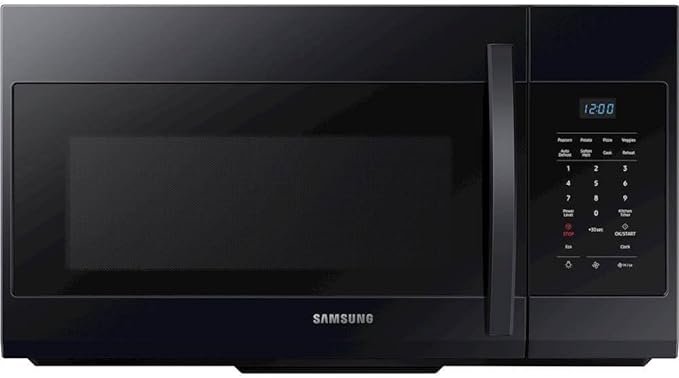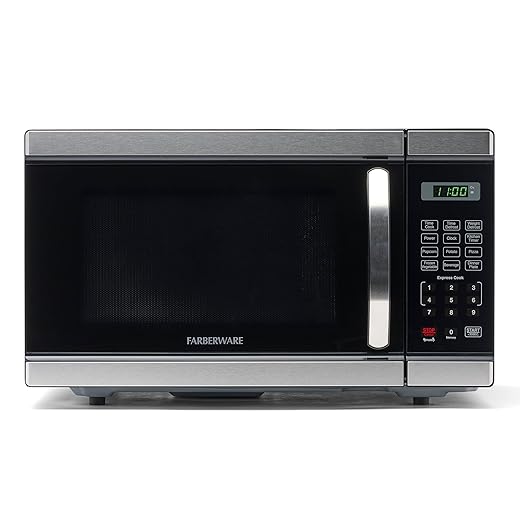Overview of Microwave Technology
Microwave technology has come a long way since its inception. Initially developed for radar during World War II, microwaves were later adapted for use in the kitchen. The first commercially available microwave oven was introduced in the 1950s, and since then, it has undergone significant evolution. Early models were large and bulky, but advancements in technology have led to sleeker and more compact designs.
Microwave ovens work by emitting electromagnetic waves, which cause water molecules in food to vibrate rapidly. This generates heat, cooking the food quickly and efficiently. Over the years, microwave technology has improved to provide precise power control, multiple cooking functions, and innovative features like sensor cooking and inverter technology.
Importance of Microwaves in Modern Society
Microwave ovens have become an essential appliance in modern society due to their convenience and efficiency. They have revolutionized the way we cook and reheat food, saving us valuable time in our busy lives. Microwaves are especially popular among students, professionals, and families, as they offer quick and hassle-free meal preparation.
In addition to cooking, microwaves have also found applications in food preservation. Microwave drying and sterilization techniques help extend the shelf life of various products while maintaining their nutritional value. Microwaves are also used in industrial processes such as thawing frozen food, pasteurization, and drying.
Overall, microwave technology has had a profound impact on our daily lives. From heating up leftovers to advanced cooking techniques, microwaves have evolved to meet the needs of modern society.
Early Developments in Microwave Technology: Tracing the Microwave Evolution

Invention and Discovery of Microwaves
Microwave technology has come a long way since its inception. The discovery of microwaves can be traced back to the early 1940s when Percy Spencer, an engineer at Raytheon Corporation, noticed a melted chocolate bar in his pocket while working around a magnetron, a device used in radar systems. Intrigued by this accidental discovery, Spencer further experimented and realized that the magnetron emitted high-frequency electromagnetic waves that could heat food quickly.
This groundbreaking discovery led to the invention of the first microwave oven in 1947, known as the “Radarange.” This early microwave oven was massive and expensive, making it primarily accessible to commercial establishments like restaurants and hotels. However, it marked the beginning of a revolutionary kitchen appliance that would change the way we cook forever.
Early Applications and Limitations
In the early years, microwave ovens were predominantly used in commercial settings due to their size and cost. However, as technology advanced and manufacturing processes improved, smaller and more affordable microwave ovens became available for residential use.
Early microwave ovens faced limitations in terms of performance and functionality. They were primarily designed for reheating and defrosting, lacking the versatility of conventional ovens. Additionally, these early models had limited power output, resulting in longer cooking times and unevenly cooked food.
Over time, advancements in microwave technology addressed these limitations. Microwaves evolved to offer higher power outputs, more precise controls, and a wider range of cooking options. Today, modern microwave ovens incorporate features like convection cooking, grill functions, and even air frying capabilities.
World War II and Microwave Technology
Role of Microwaves in Communication and Radar Systems
Microwaves have played a crucial role in the development of communication and radar systems. In the early 20th century, scientists discovered that microwaves could be used to transmit and receive signals over long distances. This discovery revolutionized communication, as it allowed for the transmission of voice and data wirelessly.
Microwave technology became essential in the construction of radar systems during World War II. Radar relies on the reflection and detection of microwaves to detect objects and determine their position and speed. This technology proved to be a game-changer in military operations, allowing for the early detection of enemy aircraft and ships.
Over the years, microwave technology has continued to evolve and improve. Today, microwave communication systems are used extensively for wireless communication, including cell phones, satellite communication, and Wi-Fi networks. The use of microwaves in radar systems has also expanded beyond military applications to include weather forecasting, air traffic control, and even automotive collision avoidance systems.
Advancements in Microwave Technology during the War
During World War II, significant advancements were made in microwave technology. The war created a pressing need for improved radar systems, leading to rapid development in this field. Engineers and scientists worked tirelessly to enhance the capabilities of microwave technology.
One notable advancement was the development of magnetrons, which are vacuum tubes that generate microwaves. The magnetron’s invention greatly improved the power and efficiency of microwave transmission. This breakthrough allowed for the creation of more accurate and powerful radar systems.
Another key advancement was the miniaturization of microwave components. Scientists realized that reducing the size of microwave devices would make them more practical for military applications. This led to the development of compact microwave antennas, amplifiers, and waveguides, which could be easily integrated into radar systems.
The advancements in microwave technology during the war not only had a significant impact on military operations but also paved the way for future innovations. The knowledge gained during this period laid the foundation for the development of microwave ovens, satellite communication, and various other applications.
Microwave Evolution: Post-War Innovations and Commercialization

Emergence of Microwave Ovens
Microwave ovens have come a long way since their inception, undergoing significant evolution over the years. The concept of microwave cooking originated from the accidental discovery of microwave heating by Percy Spencer in the 1940s. This led to the development of the first commercially available microwave oven, the Radarange, in 1947. Initially, these ovens were large and expensive, limiting their adoption in residential kitchens.
However, with advancements in technology and increasing demand, microwave ovens began to evolve. In the 1960s, countertop models started to emerge, making them more accessible to the general public. Over time, manufacturers incorporated features like defrosting, cooking presets, and timers, further enhancing their convenience and usability.
Who Invented the Microwave Oven? - Livescience.com
January 5, 2017 - Livescience.comWho Invented the Microwave Oven? Livescience.com...
The Accidental Origin Of The Microwave - Tasting Table
April 23, 2022 - Tasting TableThe Accidental Origin Of The Microwave Tasting Table...
Evolution of the microwave - New York Daily News
October 18, 2021 - New York Daily NewsEvolution of the microwave New York Daily News...
Microwave oven: Here's who created the application and its history. - USA TODAY
June 24, 2022 - USA TODAYMicrowave oven: Here's who created the application and its history. USA TODAY...
Impact of Microwave Ovens on Home Cooking and Food Industry
The introduction of microwave ovens revolutionized home cooking and had a profound impact on the food industry. With their quick cooking time and convenience, microwave ovens became a staple in many households. They allowed for faster meal preparation, making it easier for busy individuals to enjoy home-cooked meals. The microwave’s ability to defrost and reheat food quickly also reduced food waste.
In the food industry, microwave ovens played a significant role in the development of ready-to-eat meals and convenience foods. The technology enabled mass production of microwaveable products, catering to the growing consumer demand for quick and easy meals. It also led to the emergence of microwave-safe packaging, enabling consumers to cook or heat meals directly in their packaging.
Advancements in Microwave Technology
Microwave Communication Systems
Microwave communication systems have undergone a remarkable evolution since their inception. Initially, microwave technology was primarily used for point-to-point communication, enabling long-distance transmission of signals. As the demand for faster and more efficient communication grew, microwave communication systems played a crucial role in the development of wireless networks. The introduction of microwave towers and satellite communication further revolutionized the telecommunications industry.
Over time, microwave communication systems have seen significant advancements in terms of capacity, efficiency, and reliability. The introduction of digital microwave systems allowed for higher data rates and improved signal quality. With the advent of microwave evolution, modern communication systems now utilize advanced modulation techniques and digital signal processing algorithms to achieve even higher capacities and improved interference mitigation.
Microwave Imaging and Medical Applications
Microwave imaging and medical applications have witnessed a profound transformation through the process of microwave evolution. In the past, microwave imaging was primarily used in military and security domains. However, with advancements in technology, it has found extensive applications in the medical field.
Microwave imaging techniques, such as microwave tomography and microwave-induced thermoacoustic imaging, have shown great potential for non-invasive detection and diagnosis of various medical conditions. These techniques utilize the interaction of microwaves with biological tissues to generate images that can reveal abnormalities and guide medical interventions.
Furthermore, microwave technology has contributed to the development of therapeutic applications in medicine. Microwave ablation, for instance, is a minimally invasive procedure that uses microwave energy to destroy cancerous tissues. This technique has proven to be effective in treating liver, lung, and breast cancers.
In conclusion, the evolution of microwave technology has had a significant impact on both communication systems and medical applications. From enabling faster wireless communication to facilitating non-invasive medical imaging and treatment, microwave evolution continues to shape various industries for the better.
Future Possibilities and Limitations of Microwave Evolution

Potential Applications of Microwaves in Various Industries
Microwave technology has witnessed an extraordinary evolution since its inception, revolutionizing a wide range of industries. The potential applications of microwaves have expanded beyond the kitchen to various sectors. In the telecommunications industry, microwaves are utilized for wireless communication, enabling the transmission of signals over long distances. This technology has greatly enhanced connectivity and paved the way for the development of mobile networks and satellite communication systems. Additionally, the healthcare sector has benefited from microwave technology through the use of medical imaging, such as magnetic resonance imaging (MRI) and microwave thermotherapy for cancer treatment. The ability of microwaves to penetrate tissues and generate heat selectively has made it a valuable tool in the medical field. Moreover, the agricultural industry has harnessed microwaves for soil sterilization, pest control, and crop drying. These applications highlight the versatility and significant impact of microwave evolution across diverse industries.
Challenges and Ethical Considerations in Microwave Technology
As microwave technology continues to advance, it brings forth a set of challenges and ethical considerations. One of the primary concerns is the potential health risks associated with prolonged exposure to microwaves. Although studies have shown no conclusive evidence of harmful effects, there is ongoing debate about the long-term consequences of microwave radiation. Additionally, the rise of wireless communication using microwaves raises concerns about privacy and data security. The vulnerability of wireless networks to hacking and unauthorized access calls for rigorous security measures to protect sensitive information. Furthermore, the disposal of microwave devices poses an environmental challenge. With the rapid obsolescence of technology, proper recycling and disposal methods must be implemented to minimize electronic waste. These challenges and ethical considerations demand continuous research, regulation, and responsible usage of microwave technology to ensure a safe and sustainable evolution.












